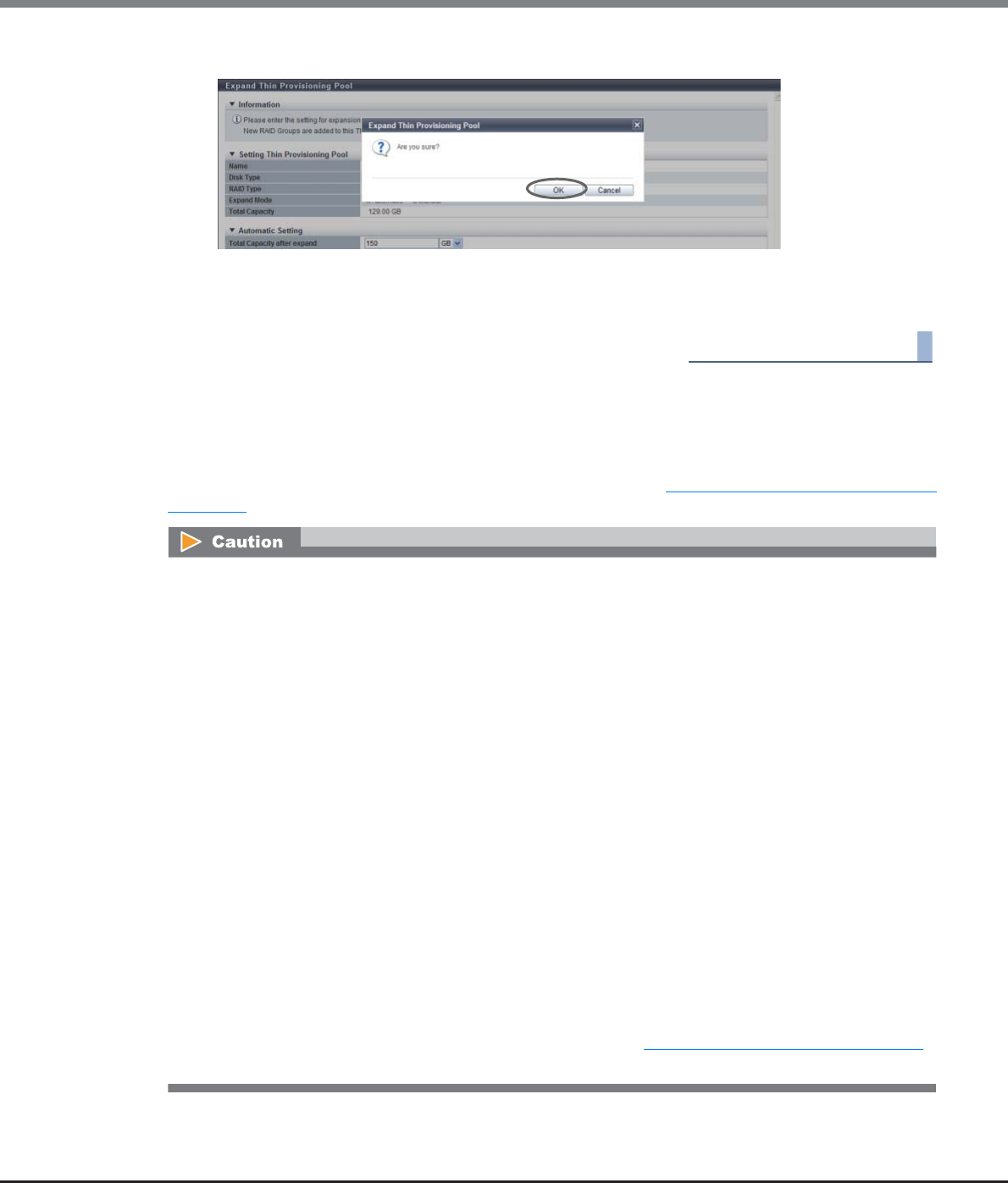
Chapter 7 Thin Provisioning Pool Management
7.2 Functions in the Action Area for Thin Provisioning
ETERNUS Web GUI User’s Guide
Copyright 2013 FUJITSU LIMITED P2X0-1090-10ENZ0
233
3 Click the [OK] button.
→ Expand Thin Provisioning Pool starts.
4 Click the [Done] button to return to the [Thin Provisioning Pool] screen.
End of procedure
■ Manually selecting drives to expand a TPP
Select drives manually to expand the TPP.
Check the specifications of the existing RAID groups (number of member drives and disk type) in the TPP in
advance. For the details on how to check the specifications, refer to "Check the RAID group specifications"
(page 234).
• The conditions for RAID groups in the TPP are as follows:
- The RAID type (High Performance (RAID1+0)/High Capacity (RAID5)/High Reliability (RAID6)/
Mirroring (RAID1)/Striping (RAID0)) must be the same
- The number of member drives in the RAID group must be the same
- The disk type (Online/Nearline/SSD/SED) must be the same
(When "Online" is selected for "Disk Type", three types of RAID group may be registered in the TPP. The
three available types are a RAID group that is configured with "Online" disks, a RAID group that is con-
figured with "Nearline" disks, and a RAID group that is configured with both "Online" disks and Near-
line" disks. In this case, registering RAID groups that are only configured with "Online" disks is
recommended to prevent any reduction of TPP access performance.)
• The following shows the recommended drive configuration of the RAID group;
- Select drives with the same capacity. If drives of different capacities exist in a RAID group, the smallest
drive becomes the standard, and all other drives are regarded as the same capacity as the smallest
drive. In this case, the remaining drive space will NOT be used.
- Select drives with the same speed. If drives of different speed exist in a RAID group, access
performance of the RAID group may be affected.
- When "High Performance (RAID1+0)" or "Mirroring (RAID1)" is selected for the RAID type, locate the
drives (mirroring pair drives) divided into different lines (for ETERNUS DX410 S2/DX440 S2).
- When "High Capacity (RAID5)" or "High Reliability (RAID6)" is selected for the RAID type, locate the
drives (striping multiple drives) divided into two or more lines (for ETERNUS DX410 S2/DX440 S2).
• When using the ETERNUS DX8100 S2/DX8700 S2, the restrictions that apply to the drive layout for RAID
group configuration vary depending on the RAID type. Refer to "Restrictions of drive layout" (page 179)
for details.


















